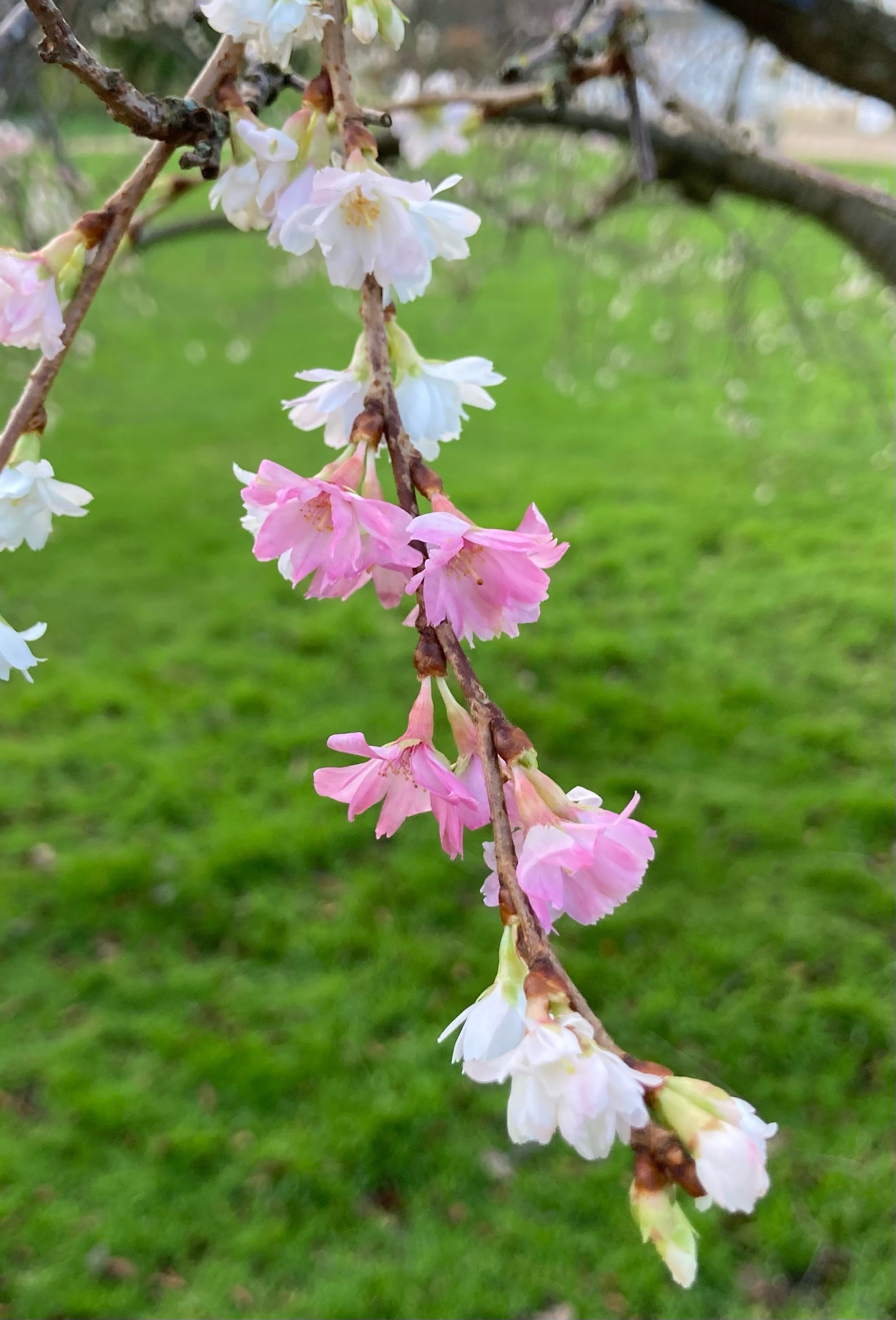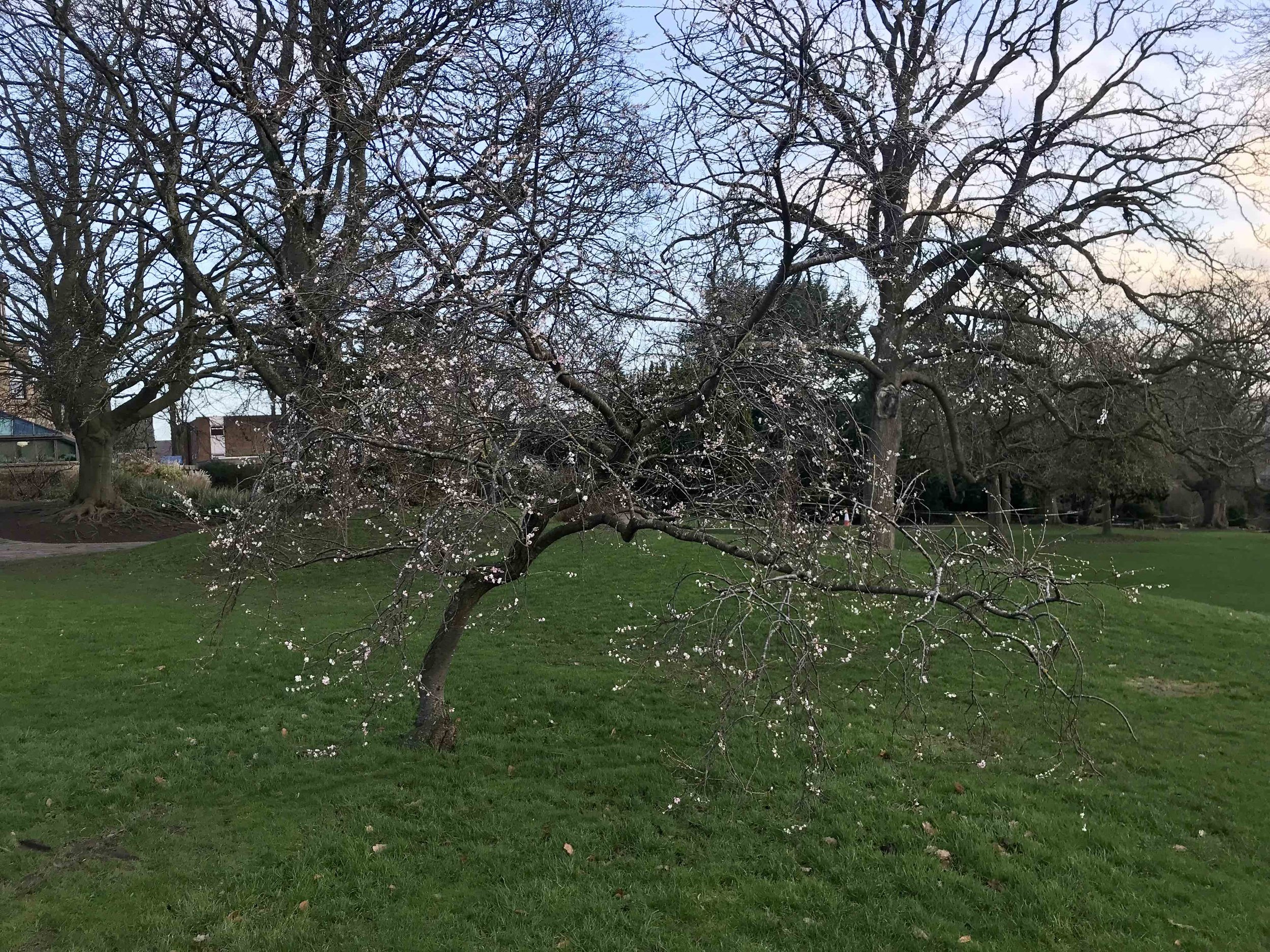Prunus × subhirtella f. autumnalis
As you walk into the Gardens from the Main Entrance on Clarkehouse Road, you will see to your right on the main lawn, a small but charming winter flowering tree bearing masses of lovely, semi-double, pale pink to white flowers which bloom in flushes repeatedly from November until March. There is a larger example of this tree to be found directly to the right of the main path opposite the entrance to the rock and water garden.
Prunus x subhirtella f. autumnalis is a small, deciduous, ornamental cherry tree, with an upright-spreading to rounded habit, and ovate, toothed, green leaves, bronze-tinted when young, orange and yellow in autumn. The tree flowers over an unusually long period of time, lightening the winter gloom in any garden. The flowers are sometimes followed by very bitter small fruit, which are loved by birds. With a height and spread of around 8m x 4m it is suitable for many gardens.
A hybrid form between P. incisa and P. itosakura, the tree was apparently first distributed commercially in this country by the Daisy Hill Nursery (Newry, Northern Ireland) around 1910, but a tree imported direct from Japan was planted at Borde Hill in Sussex some ten years earlier. It was at first grown under the name P. miqueliana ’Autumnalis’ and received an Award of Merit when shown from Borde Hill in 1912 as P. miqueliana, and an Award of Garden Merit in 1924 under its present name.
It will grow in a range of well drained but moist soils and, while it suits many aspects, is best grown in full sun, and in a position where it can be fully appreciated. It is more tolerant of summer heat and winter cold than other flowering cherries. Generally, it has good disease resistance and is a low maintenance plant which does not require much pruning.


